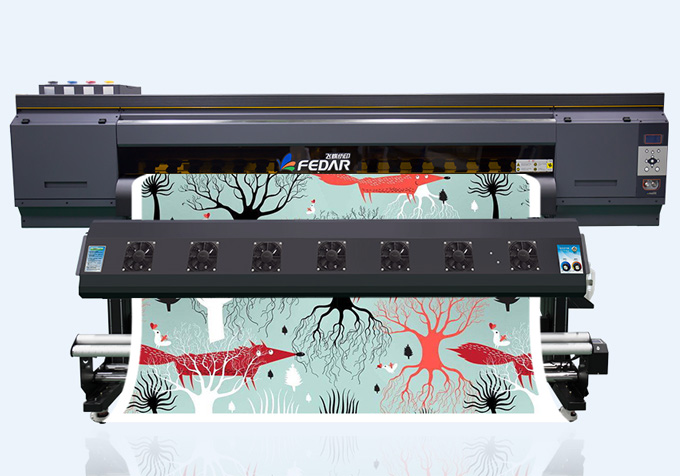There are many types of fedar printing machines, and there are many types of materials and consumables. Below I will briefly introduce the classification and use of various materials of printing machines.
Introduction to paper materials:
PP film (what we called the poster, high resolution, but there is no built-in behind the surface, customers can stick to the wall with double-sided tape, can be used multiple times)
Adhesive (The difference from PP film is that it has its own adhesive surface. Customers tear the back film and stick it on the wall)
Photo paper (also commonly known as posters, exquisite photo paper, high precision, without its own plastic surface)
Light box film (the exquisite inkjet painting in front of the lightbox, it is different from the inkjet painting on our common signboards, but used for the inkjet painting on McDonald's vegetable lightboxes, with the characteristics of exquisite images and moderate light transmission)
Adhesive mount ordinary board(It is to stick the adhesive on a special KT board similar to a foam board, and then add edges around it to form a picture frame. This material is lightweight and can be used for company decoration and exhibition display.)
Adhesive mount high quality board (The difference from ordinary board is that there will be no air bubbles on the board surface for a long time.)
Transparent Adhesive (Another type of adhesive, but this type has transparency. Most are used for doorway posting. This material is noble and generous and is an option for displaying the company's image.)
Introduction to cloth materials:
Canvas: Due to the different substrates of the cloth, the canvas materials have different styles of products, so their expressions are also different. According to the material of the base cloth, there are generally fibrous materials, cotton materials, cotton-like materials, spinning materials and so on. But no matter what material is used, the canvas has a common feature, that is, the texture of the canvas is clearer, and it has a certain effect of oil painting.
Photo cloth: Photo cloth is a more traditional cloth material. Due to its low price, the production cost is equivalent to the cost of PP plus cold laminating film, and it can save a series of film-passing processes. Now it is in many fields. Photo cloth has been used instead of traditional photo consumables to make hanging pictures or background pictures. Photo cloth has a certain degree of water resistance, and pigment inks have better water resistance and weather resistance. Because cloth photo materials have good ink absorption properties, the pictures produced are bright in color, good in saturation, and have certain art effect. With the continuous development of inkjet printing equipment, more solvent-based photo cloths are applied in the market.
Banner cloth: Banner cloth is one of the most widely used and biggest demand cloth photo consumables. It is mainly used for indoor and outdoor banners, flags, curtains, and scenery pictures. It is often called "flag cloth" or "waterproof cloth". Because it uses synthetic fiber as the base material, the characteristics of the photo material are that the material is soft and suitable for hanging. The banner cloth uses solvent-based ink, which has better water resistance and outdoor weather resistance, and is used for outdoor screen display. Among cloth photo materials, banner cloth is the most affordable one, because it is light in weight, good in effect, and convenient for post-processing. Currently, many outdoor screens are produced using banner cloth.
Art cloth: Art cloth is a kind of cloth photo material with a wide range of uses. Its color expression is vivid and realistic. It can be used for hanging pictures of X exhibition stands, roll-ups, etc., and it can also be used for stage backgrounds, art photos, wedding photos, etc. . Because the coating is made of matte material, it has a certain degree of waterproof performance, so it is not necessary to use a film in outdoor use in the short term. Non-woven fabric: also known as pearl canvas. Because non-woven fabrics have very good water absorption properties, the biggest feature is good ink absorption, bright colors in printed screens, high saturation, and good weather resistance. Non-woven fabrics are generally used in some studio backgrounds, special stage sets, art productions, and so on.


